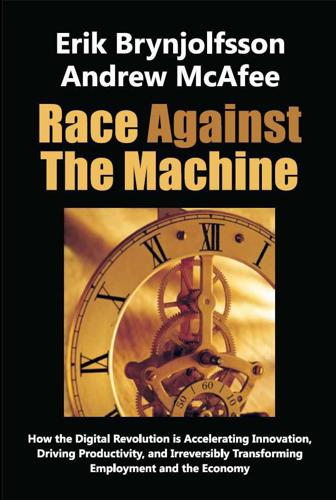
Race Against the Machine: How the Digital Revolution Is Accelerating Innovation, Driving Productivity, and Irreversibly Transforming Employment and the Economy
by
Erik Brynjolfsson
Published 23 Jan 2012
But this is fundamentally a book about digital technology, and when we look at the full impact of computers and networks, now and in the future, we are very optimistic indeed. These tools are greatly improving our world and our lives, and will continue to do so. We are strong digital optimists, and we want to convince you to be one, too. Chapter 2. Humanity and Technology on the Second Half of the Chessboard Any sufficiently advanced technology is indistinguishable from magic. —Arthur C. Clarke, 1962 We used to be pretty confident that we knew the relative strengths and weaknesses of computers vis-à-vis humans. But computers have started making inroads in some unexpected areas. This fact helps us to better understand the past few turbulent years and the true impact of digital technologies on jobs.
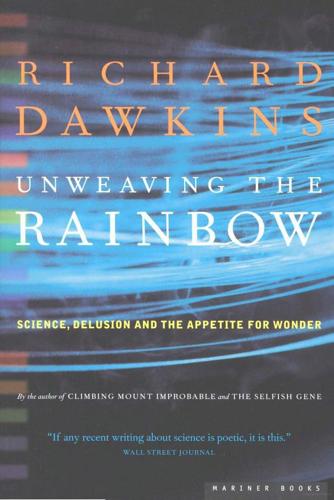
Unweaving the Rainbow
by
Richard Dawkins
Published 7 Aug 2011
To us, a mobile telephone may be no more than an antisocial nuisance on trains. But to our ancestors from the nineteenth century, when trains were new, a mobile telephone would have seemed pure magic. As Arthur C. Clarke, the distinguished science fiction writer and evangelist for the limitless power of science and technology, has said, 'Any sufficiently advanced technology is indistinguishable from magic.' This has been called Clarke's Third Law, and I shall return to it. William Thomson, first Lord Kelvin, was one of the most distinguished and influential of nineteenth-century British physicists. He was a thorn in Darwin's side because he 'proved', with massive authority but, as we now know, even more massive error, that the earth was too young for evolution to have occurred.
…
If a man claims to have witnessed his aunt in cross-legged levitation, or a Turk zooming over the minarets on a magic carpet, should we swallow his story on the grounds that those of our ancestors who doubted the possibility of radio turned out to be wrong? No, of course these are not sufficient grounds for believing in levitation or magic carpets. But why not? Clarke's Third Law does not work in reverse. Given that 'Any sufficiently advanced technology is indistinguishable from magic', it does not follow that 'Any magical claim that anybody may make at any time is indistinguishable from a technological advance that will come in the future.' Yes, there have been occasions when authoritative sceptics have come away with egg on their pontificating faces.
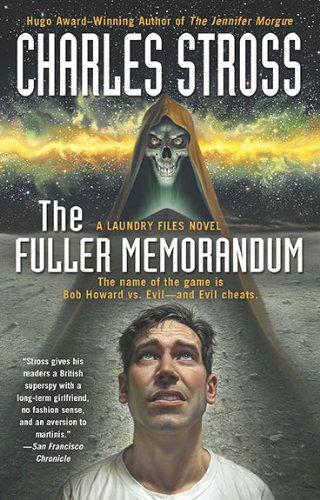
Fuller Memorandum
by
Stross, Charles
Published 14 Jan 2010
(True names have power: even if it's only the power to attract the supernatural equivalent of a Make Money Fast spammer, I'd rather not put myself in their sights, thank you very much.) And I work for the Laundry. The Laundry is the British Government's secret agency for dealing with "magic." The use of scare-quotes is deliberate; as Sir Arthur C. Clarke said, "Any sufficiently advanced technology is indistinguishable from magic," so "magic" is what we deal with. Note that this does not involve potions, pentacles, prayers, eldritch chanting, dressing up in robes and pointy hats, or most (but not all) of the stuff associated with the term in the public mind. No, our magic is computational. The realm of pure mathematics is very real indeed, and the . . . things . . . that cast shadows on the walls of Plato's cave can sometimes be made to listen and pay attention if you point a loaded theorem at them.
…
The things we sometimes refer to as elder gods are alien intelligences, which evolved on their own terms, unimaginably far away and long ago, in zones of spacetime which aren't normally connected to our own, where the rules are different. But that doesn't mean they can't reach out and touch us. As the man put it: Any sufficiently advanced technology is indistinguishable from magic. Any sufficiently advanced alien intelligence is indistinguishable from God--the angry monotheistic sadist subtype. And the elder ones . . . aren't friendly. (See? I told you I'd rather be an atheist!) I push the button on the dishwasher, straighten up, and glance at the kitchen clock.
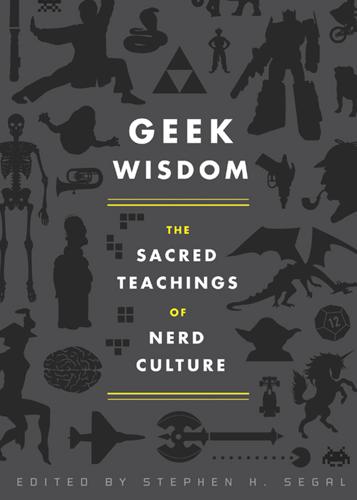
Geek Wisdom
by
Stephen H. Segal
Published 2 Aug 2011
When the Borg debuted on Star Trek in 1989, Doctor Who fans immediately lamented that they were an improved rip-off of Who’s Cybermen, first introduced in 1966. Both spacefaring cyborg races would ultimately be pwned by the badassery of the reimagined Battlestar Galactica’s Cylons (2005). “ANY SUFFICIENTLY ADVANCED TECHNOLOGY IS INDISTINGUISHABLE FROM MAGIC.” —CLARKE’S LAW SOMEDAY, history will look back and name science-fiction author Arthur C. Clarke one of the twentieth century’s most visionary thinkers. Never mind that he invented the concept of the modern satellite communication network back in 1945 (and not just in a work of fiction; he formally proposed it in a technical paper).
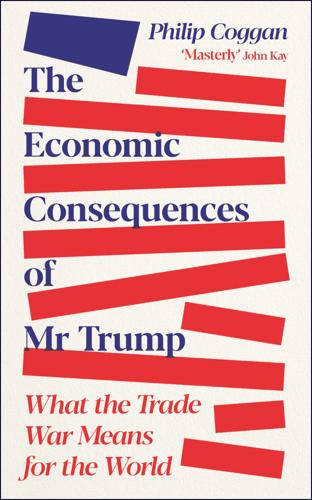
The Economic Consequences of Mr Trump: What the Trade War Means for the World
by
Philip Coggan
Published 1 Jul 2025
Indeed, trade is even more free than when Keynes wrote of the world before 1914: ‘The inhabitant of London could order by telephone, sipping his morning tea in bed, the various products of the whole earth, in such quantity as he might see fit, and reasonably expect their early delivery upon his doorstep.’3 Arthur C. Clarke, the science fiction author, wrote that ‘Any sufficiently advanced technology is indistinguishable from magic.’ It is not magic that fills our homes with goods from around the world, but the result of a trading system to which few of us give much daily thought. These words are being typed on a Samsung laptop, which may have been assembled in South Korea but on its website, Samsung Electronics lists 100 different suppliers from many different countries.4 And the laptop will have been brought to Britain by ship or plane and then transported, first to a warehouse and then to the retailer, by truck.
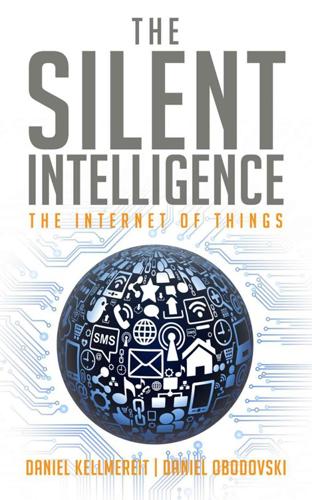
The Silent Intelligence: The Internet of Things
by
Daniel Kellmereit
and
Daniel Obodovski
Published 19 Sep 2013
(Source: http://en.wikipedia.org/wiki/Second_Life.) 18 Peer-to-peer car-sharing services like Getaround, JustShareIt, and others are in operation. We don’t know if they’ll be successful, but this type of service would not be possible without M2M. 19 After this interview and just before this book was published, BodyMedia was acquired by Jawbone. Chapter 4 CORE APPLICATION DOMAINS Any sufficiently advanced technology is indistinguishable from magic. ~ Arthur C. Clarke In 1998, when the World Wide Web was on the rise and many companies wondered how it would affect their businesses, Nicholas Negroponte wrote in the foreword to Unleashing the Killer App:20 You can see the future best through peripheral vision.
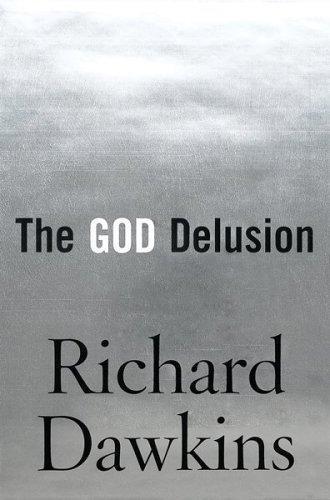
The God Delusion
by
Richard Dawkins
Published 12 Sep 2006
Their technical achievements would seem as supernatural to us as ours would seem to a Dark Age peasant transported to the twenty-first century. Imagine his response to a laptop computer, a mobile telephone, a hydrogen bomb or a jumbo jet. As Arthur C. Clarke put it, in his Third Law: ‘Any sufficiently advanced technology is indistinguishable from magic.’ The miracles wrought by our technology would have seemed to the ancients no less remarkable than the tales of Moses parting the waters, or Jesus walking upon them. The aliens of our SETI signal would be to us like gods, just as missionaries were treated as gods (and exploited the undeserved honour to the hilt) when they turned up in Stone Age cultures bearing guns, telescopes, matches, and almanacs predicting eclipses to the second.
…
It seems that in every case the islanders were bowled over by the wondrous possessions of the white immigrants to their islands, including administrators, soldiers and missionaries. They were perhaps the victims of (Arthur C.) Clarke’s Third Law, which I quoted in Chapter 2: ‘Any sufficiently advanced technology is indistinguishable from magic.’ The islanders noticed that the white people who enjoyed these wonders never made them themselves. When articles needed repairing they were sent away, and new ones kept arriving as ‘cargo’ in ships or, later, planes. No white man was ever seen to make or repair anything, nor indeed did they do anything that could be recognized as useful work of any kind (sitting behind a desk shuffling papers was obviously some kind of religious devotion).
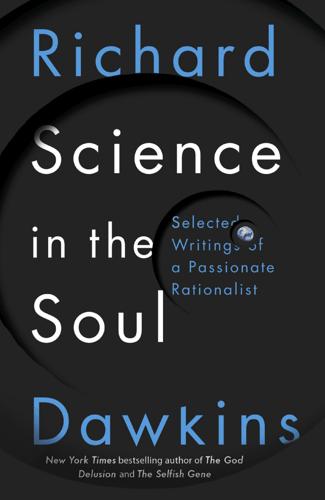
Science in the Soul: Selected Writings of a Passionate Rationalist
by
Richard Dawkins
Published 15 Mar 2017
It would be arrogant and rash to claim our present knowledge as all there is to know. Today’s commonplaces, such as mobile telephones, would have seemed to previous ages pure magic. And that should be our warning. Arthur C. Clarke, distinguished novelist and evangelist for the limitless power of science, has said: ‘Any sufficiently advanced technology is indistinguishable from magic.’ This is Clarke’s Third Law. Maybe, some day in the future, physicists will fully understand gravity, and build an anti-gravity machine. Levitating people may one day become as commonplace to our descendants as jet planes are to us. So, if someone claims to have witnessed a magic carpet zooming over the minarets, should we believe him, on the grounds that those of our ancestors who doubted the possibility of radio turned out to be wrong?
…
So, if someone claims to have witnessed a magic carpet zooming over the minarets, should we believe him, on the grounds that those of our ancestors who doubted the possibility of radio turned out to be wrong? No, of course not. But why not? Clarke’s Third Law doesn’t work in reverse. Given that ‘any sufficiently advanced technology is indistinguishable from magic’, it does not follow that ‘any magical claim that anybody may make at any time is indistinguishable from a technological advance that will come some time in the future’. Yes, there have been occasions when authoritative sceptics have come away with egg on their pontificating faces.

Red November: Inside the Secret U.S.-Soviet Submarine War
by
W. Craig Reed
Published 3 May 2010
If the conspiracy theorists are correct, then the lessons learned from allowing the greed of John Walker to manipulate entire nations will stay buried, and the cause-and-effect results of this act remain as a black stain on the pages of history. CHAPTER THIRTEEN Any sufficiently advanced technology is indistinguishable from magic. —ARTHUR C. CLARKE THE SOVIETS FINALLY GAVE UP THE search for their lost K-129 and went home in May 1968, not long after the sinking of the Scorpion. The U.S. Navy let another month go by and then called in the cavalry. Captain James F. Bradley Jr., from the Office of Undersea Warfare, had already spearheaded the creation of the perfect platform to undertake the mission of finding the missing Golf II–class boat.
…
Rejoicing, the fishermen called the Coast Guard and said that God had saved the sunken ship, miracles do happen, and as changed men, they had sworn off liquor and women for life, or at least the weekend. Duckett knew nothing of the affair until Mr. P. read the story in the paper the following day. When informed about the incident, Duckett smiled and quoted Arthur C. Clarke, who once said that “Any sufficiently advanced technology is indistinguishable from magic.” Armed with new “magical” deep-diving cameras designed by Joe Houston, the research vessel Sea Scope steamed to the K-129 site. Sea Scope once sailed the seas as the USS Harrier (AM-366), a U.S. Navy Admirable Class Minesweeper commissioned in 1945. The Harrier received a name and designation change not long after World War II.

Lifespan: Why We Age—and Why We Don't Have To
by
David A. Sinclair
and
Matthew D. Laplante
Published 9 Sep 2019
“So if the average lifespan keeps expanding, that would mean the long-lived would live even longer, beyond 115 years”; A. Park, “There’s No Known Limit to How Long Humans Can Live, Scientists Say,” Time, June 28, 2017, http://time.com/4835763/how-long-can-humans-live/. 16. “Any sufficiently advanced technology is indistinguishable from magic.” “Arthur C. Clarke,” Wikiquote, https://en.wikiquote.org/wiki/Arthur_C._Clarke. ONE. VIVA PRIMORDIUM 1. D. Damer and D. Deamer, “Coupled Phases and Combinatorial Selection in Fluctuating Hydrothermal Pools: A Scenario to Guide Experimental Approaches to the Origin of Cellular Life,” Life 5, no. 1 (2015): 872–87, https://www.mdpi.com/2075-1729/5/1/872. 2.
…
Spaight, Aircraft in War (London: Macmillan, 1914), 3. 2. This was one of what has become known as three “laws” penned by Clarke, each famous in its own right. The other two were “The only way of discovering the limits of the possible is to venture a little way past them into the impossible” and “Any sufficiently advanced technology is indistinguishable from magic.” A. C. Clarke, “Hazards of Prophecy: The Failure of Imagination,” in Profiles of the Future: An Inquiry into the Limits of the Possible (New York: Orion, 1962), 14, 21, 36 3. L. Gratton and A. Scott, The 100 Year Life: Living and Working in an Age of Longevity (London and New York: Bloomsbury Publishing, 2018). 4.
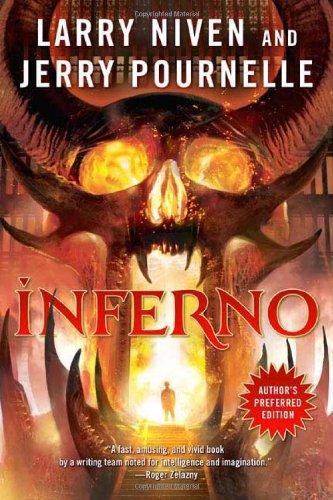
Inferno
by
Niven, Larry
and
Pournelle, Jerry
Published 2 Sep 2008
It chewed at my soul the way a ragged tooth attracts the tongue. How could we have weight and no mass? The wrong weight, and . . . Infernoland. Disneyland of the Damnable. How long had they kept me in that bottle? Clarke’s Law kept running through my head, an old axiom of science fiction: “Any sufficiently advanced technology is indistinguishable from magic.” In my time it would take magic, the supernatural, to make that many people, not weightless, but massless. It wasn’t even possible in theory to extract the inertia and leave the weight. But they could do it, the Builders, the God Corporation. Why? It must have cost a lot.
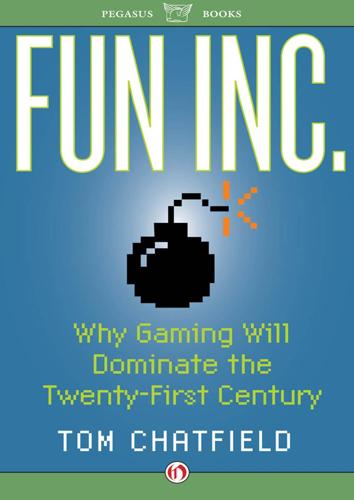
Fun Inc.
by
Tom Chatfield
Published 13 Dec 2011
And yet, as the next chapter explores their own brief history represents an evolution of incredible rapidity and scope: one that has from the beginning lain at the cutting edge of the computer revolution, and that is now beginning to remould our actions everywhere from the classroom to the boardroom to the arenas of twenty-first century warfare. CHAPTER 2 Technology and magic ‘Any sufficiently advanced technology is indistinguishable from magic’ wrote the science fiction novelist Arthur C Clarke in 1973, giving the computer age one of its most memorable maxims. Had Clarke, who died in 2008, lived just a year longer, he would have been able to see a piece of technology being demonstrated at a 2009 Expo in Los Angeles that looked, to many in the audience, very close to magic indeed.
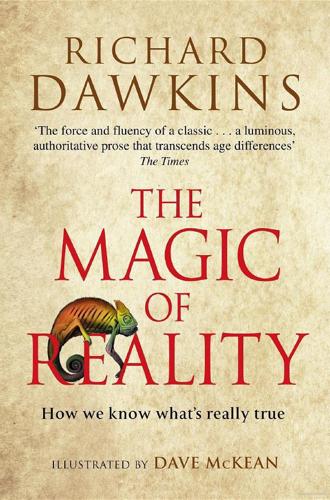
The Magic of Reality: How We Know What's Really True
by
Richard Dawkins
Published 3 Oct 2011
In Holmes’s world, a suspect in a murder case who could prove that he was in New York the evening after the murder was committed in London would have a perfect alibi, because in the late nineteenth century it was impossible to be in New York and in London on the same day. Anyone who claimed otherwise would seem to be invoking the supernatural. Yet modern jet planes make it easy. The eminent science-fiction writer Arthur C. Clarke summed the point up as Clarke’s Third Law: Any sufficiently advanced technology is indistinguishable from magic. If a time machine were to carry us forward a century or so, we would see wonders that today we might think impossible – miracles. But it doesn’t follow that everything we might think impossible today will happen in the future. Science-fiction writers can easily imagine a time machine – or an anti-gravity machine, or a rocket that can carry us faster than light.

Avogadro Corp
by
William Hertling
Published 9 Apr 2014
Each example justification already incorporated details gleaned from the original email, like the project name and timeline. David waited quietly while the thirty second video played. He heard some soft exclamations in the background from the group. He knew this was incredibly impressive the first time someone saw it. He smiled to himself. It was Arthur C. Clarke who said, “Any sufficiently advanced technology is indistinguishable from magic.” Well, this was magic. David paused to let the video sink in before resuming. “It’s not enough to provide a general set of recommendations. Different people are motivated by different kinds of language, different styles of communication, different reasons. Let’s use another example.
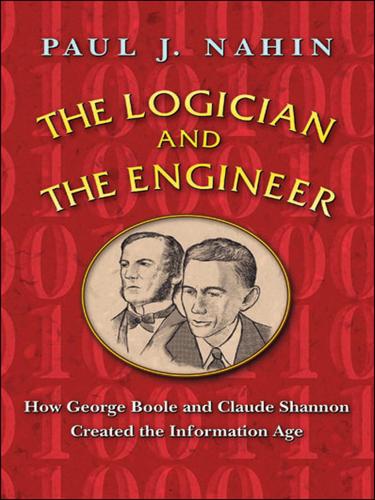
The Logician and the Engineer: How George Boole and Claude Shannon Created the Information Age
by
Paul J. Nahin
Published 27 Oct 2012
” — In a profile of Claude Shannon, Scientific American (January 1990) 5.1 DIGITAL TECHNOLOGY: RELAYS VERSUS ELECTRONICS Today’s digital circuitry is built with electronic technology that the telephone engineers of the 1930s and the pioneer computer designers of the 1940s would have thought to be magic. And I mean that literally: to quote science fiction writer Arthur C. Clarke’s famous third law: “Any sufficiently advanced technology is indistinguishable from magic.”1 An example of this is the ordinary radio, which while commonplace to us (modern kids probably find AM radio just a bit boring!) would have been magic to the greatest of the Victorian scientists, including James Clerk Maxwell, himself who first wrote the equations that give life to radio.
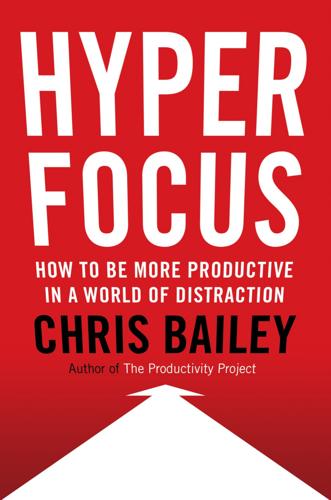
Hyperfocus: How to Be More Productive in a World of Distraction
by
Chris Bailey
Published 31 Jul 2018
When you double down on what you’re already accomplished at, you’ll be surprised by how much more productive and creative you become. LIKE MAGIC As we continue to assemble a constellation of dots around a certain topic, ideas begin to build upon one another. Eventually ideas become magic. I love this quote from British science fiction writer Arthur C. Clarke: “Any sufficiently advanced technology is indistinguishable from magic.” I’d take this a step further to argue that any sufficiently complex decision or idea is also indistinguishable from magic. Whenever we don’t understand the complex network of dots that contribute to some result, we ascribe it to magic or genius. I’ve had an obsession with magic tricks since I can remember, but I find figuring out the workings behind a complex illusion far more satisfying than seeing the trick itself.
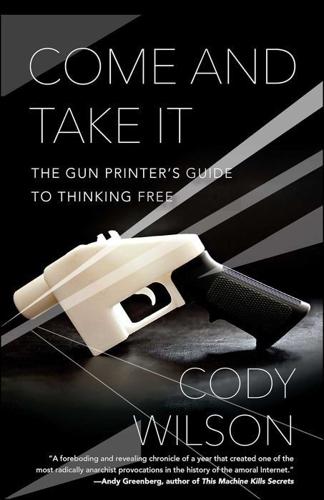
Come and Take It: The Gun Printer's Guide to Thinking Free
by
Cody Wilson
Published 10 Oct 2016
They made me jealous too. Chris’s friend looked at both of us then, his face flushed with the chill of true and unwelcome surprise. And I whispered it: “We are the heartworms of history.” * * * The eminent science-fiction writer Arthur C. Clarke’s Third Law states: “Any sufficiently advanced technology is indistinguishable from magic.” Although 3D printing may seem like magic, it came from very practical beginnings. A man named Chuck Hull first demonstrated “solid imaging” in the lab in 1984. He translated a digital design into a set of coordinates able to be translated to an ultraviolet beam aimed at a vat of liquid photopolymer.

Space Odyssey: Stanley Kubrick, Arthur C. Clarke, and the Making of a Masterpiece
by
Michael Benson
Published 2 Apr 2018
“This is natural,” explained the older man. “Everything has to die and has just so long to live.” Ikkyu, producing the shattered cup, said, “It was time for your cup to die.” (From www.ashidakim.com.) CHAPTER SEVEN PURPLE HEARTS AND HIGH WIRES SUMMER–WINTER 1966 Any sufficiently advanced technology is indistinguishable from magic. —CLARKE’S THIRD LAW With main unit production over at least for the moment, Kubrick was free to focus on two major areas of concern. One constituted the visual effects necessary to turn his film into a convincing simulacrum of our spacefaring future—exterior shots of the Aries, Orion, and Discovery spacecraft in flight, of the Moon Bus landing, and of his astronauts’ free-floating space walks—as well as adding a more varied visual pizzazz to augment the neopsychedelic Star Gate material he’d shot already in that abandoned New York brassiere factory in early 1965.
…
It takes away all the magic.” His solution now—essentially an attempt to introduce magic—was an example of how some sequences of 2001 functioned almost as a rejection of the novel’s approach. (It was, however, also a filmic illustration of Clarke’s famous third law: “Any sufficiently advanced technology is indistinguishable from magic.” Here as elsewhere, Kubrick may at times have had a more intuitive grasp of Clarke’s principles than even the author did. For his part, however, Clarke observed in 1969 that he and Kubrick had consciously “wanted to hint at magic, things that we could in principle not understand at this level of our development.”)

Makers
by
Chris Anderson
Published 1 Oct 2012
And there’s nothing self-assembling about the way a 3-D printer works: it does all the assembling itself, with the brute force of a laser solidifying a powder or liquid resin, or melting plastic and spreading it down in a fine line. But you get the point. We can imagine something, draw it on a computer, and a machine can make it real. We can push a button and an object will appear (eventually). As Arthur C. Clarke put it, “any sufficiently advanced technology is indistinguishable from magic.” This is getting close. Four Desktop Factories 1) 3-D PRINTER: A 3-D printer and the paper printer you’ve probably already got on your desktop play similar roles. The traditional laser (or inkjet) printer is a 2-D printer: it takes pixels on a screen and turns them into dots of ink or toner on a 2-D medium, usually paper.
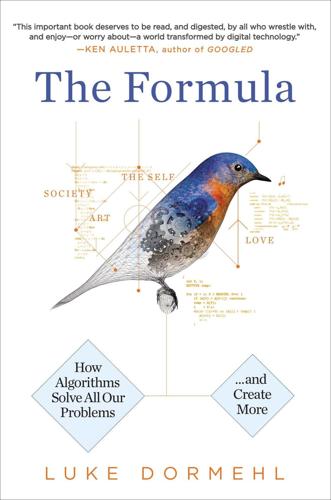
The Formula: How Algorithms Solve All Our Problems-And Create More
by
Luke Dormehl
Published 4 Nov 2014
According to a survey of web users carried out in 2005, only 19 percent of individuals expressed a lack of trust in their search engines, while more than 68 percent considered the search engines they used regularly to be fair and unbiased.17 Science-fiction author Arthur C. Clarke famously wrote, “any sufficiently advanced technology is indistinguishable from magic.” Just like photography appeared to people over 100 years ago, so too does the speed with which algorithms work make us view them as authoritative and unaffected by human fallibility. Paste a block of text into Google’s translation services and in less than a second its algorithms can transform the words into any one of 58 different languages.
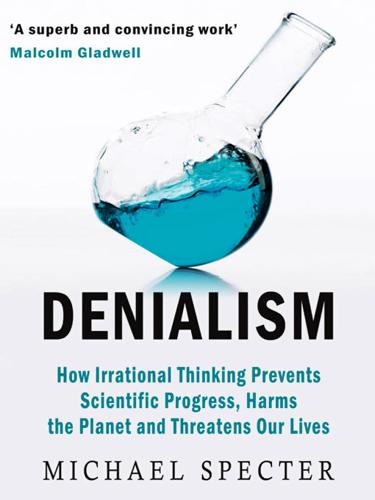
Denialism: How Irrational Thinking Hinders Scientific Progress, Harms the Planet, and Threatens Our Lives
by
Michael Specter
Published 14 Apr 2009
We may be a nation of immigrants, but more than that we are the nation that invents: from refrigerators to resistors, antibiotics, jets, and cell phones, to the computer software that governs much of our lives and the genetic sequencing technology that will soon begin to do so. What would have seemed like sorcery a century ago is now regarded simply as fact. In 1961, Arthur C. Clarke famously wrote that “any sufficiently advanced technology is indistinguishable from magic.” Who could make such a statement today? What would magic look like to us? It has become routine to deliver babies months before they are considered alive—not to mention to keep people breathing long after they are, in any meaningful sense, dead. My grandfather died in 1962 at the age of sixty-six.
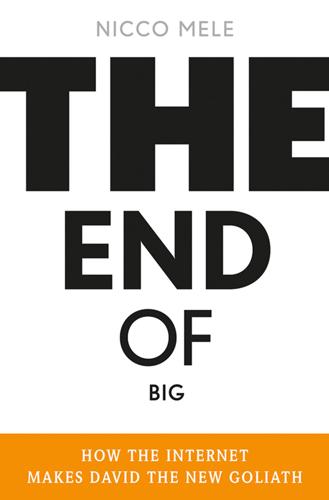
The End of Big: How the Internet Makes David the New Goliath
by
Nicco Mele
Published 14 Apr 2013
That seems silly and inefficient, but in another sense, it is simply amazing. Every thing you do on your computer—every YouTube video you watch, every Skype call you make, every e-mail you send—is broken down into its requisite zeros and ones and then reassembled somewhere else. As Arthur C. Clarke says, “Any sufficiently advanced technology is indistinguishable from magic.”22 Software was created in part to offer an abstraction of “electricity–no electricity,” so that you could use a mouse or type Shift + e to get E. Computer hardware—the physical parts of the computer that you can touch—would use software to provide efficiency to human beings, so that we would be able to communicate with machines in our language rather than the electricity–no electricity of their language.
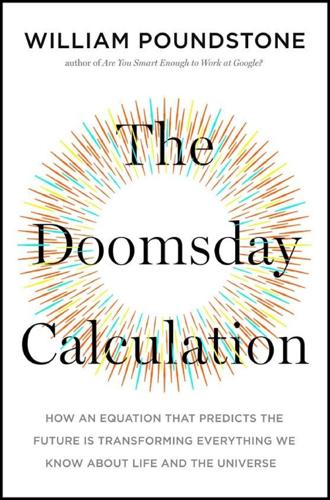
The Doomsday Calculation: How an Equation That Predicts the Future Is Transforming Everything We Know About Life and the Universe
by
William Poundstone
Published 3 Jun 2019
Two Questions for an Extraterrestrial 1. “If you believe that our intelligent descendants”: Gott 1993, 319. 2. more than forty orders of magnitude: Sandberg, Drexler, Ord 2018, 5–6. 3. “probably extremely far away”: Sandberg, Drexler, Ord 2018, 16. 4. Clarke’s words: “Any sufficiently advanced technology is indistinguishable from magic” is presented as Clarke’s Third Law in Profiles of the Future (1973). (Hence a self-reproducing robot can look like a monolith.) 5. Einstein was a smart guy: Gott interview, July 31, 2017. 6. “beyond which human affairs”: Ulam 1958. Pandora’s Box 1. consensus talking points shifted: John Leslie made this point.
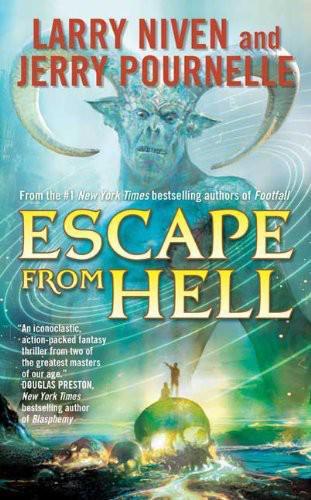
Escape from Hell
by
Larry Niven; Jerry Pournelle
Published 1 Apr 2010
“It’s part of your education,” she said. “Eh?” “Allen, you didn’t believe in Hell. You thought this whole place was constructed by — by what? Alien engineers? Deviants from the future?” “Either. Both. But it couldn’t be. I mean, maybe it could. Clarke’s Law says that any sufficiently advanced technology is indistinguishable from magic, but Sylvia, it doesn’t feel like magic! And it’s not a dream, it’s a lot too real, and —” “Education,” Sylvia said. “Shock treatment. You needed all this to convince you that it is all real.” “And you didn’t?” A tree can’t shrug, but I could hear a shrug in her voice.

The Battery: How Portable Power Sparked a Technological Revolution
by
Henry Schlesinger
Published 16 Mar 2010
If there are detours, it is only because the facts uncovered were either too interesting or too much fun to leave out. As an author, I’d like to believe this is the first book in which Wolfman Jack, Michael Faraday, Lord Byron, and the band Metallica appear between the same covers. 1 A World without Science “Any sufficiently advanced technology is indistinguishable from magic.” —Arthur C. Clarke In the early 1800s, the Danish curator and archaeologist Christian Jürgensen Thomsen hit on a novel idea for classifying prehistory artifacts. By dividing them into three categories—Stone Age, Bronze Age, and Iron Age—he was able to make some sense of his museum’s collection and shed light on civilizations long vanished.
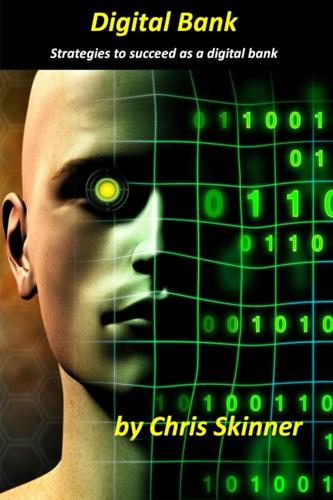
Digital Bank: Strategies for Launching or Becoming a Digital Bank
by
Chris Skinner
Published 27 Aug 2013
This means the bank that ties itself into the value chain of intellisense, is the bank that will be at the heart of the next generation of retail payments. And that means being the bank that mines data to provide predictive, proactive, proximity based payments. This also means that the augmented economy is already a reality. The Augmented Economy “Any sufficiently advanced technology is indistinguishable from magic.” Arthur C. Clarke, 1917 - 2008 The augmented economy, where everything is connected and communicating and transacting non-stop, became a reality in 2013 when Google launched Google Glass. Google Glass is a pair of wifi glasses that allow you to see enhanced information about all that is around you in real-time.

The Rise of Superman: Decoding the Science of Ultimate Human Performance
by
Steven Kotler
Published 4 Mar 2014
It’s been a real magical mystery tour. Danny Way jumped over the Great Wall of China on a shattered limb; Ian Walsh paddled into a wave the size of an apartment building; Dean Potter caught hold of a climbing rope while falling at terminal velocity into the Cellar of Swallows. “Any sufficiently advanced technology is indistinguishable from magic,” Arthur C. Clarke famously told us. Hopefully one thing is now clear—flow is that advanced technology. It is also very disruptive technology—which is exactly what we need right now. In 2011, I cowrote a book with X Prize founder and Singularity University cofounder Peter Diamandis called Abundance.

The Second Machine Age: Work, Progress, and Prosperity in a Time of Brilliant Technologies
by
Erik Brynjolfsson
and
Andrew McAfee
Published 20 Jan 2014
However, “the machine age” is also a label used by some economic historians to refer to a period of rapid technological progress spanning the late nineteenth and early twentieth centuries. This same period is called by others the Second Industrial Revolution, which is how we’ll refer to it in later chapters. “Any sufficiently advanced technology is indistinguishable from magic.” —Arthur C. Clarke IN THE SUMMER OF 2012, we went for a drive in a car that had no driver. During a research visit to Google’s Silicon Valley headquarters, we got to ride in one of the company’s autonomous vehicles, developed as part of its Chauffeur project.
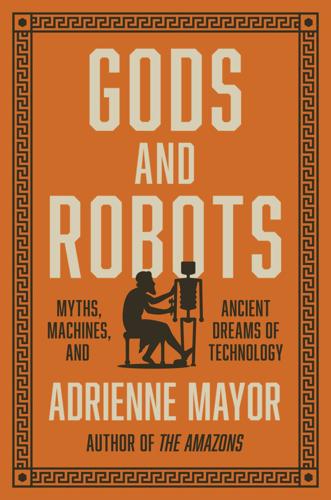
Gods and Robots: Myths, Machines, and Ancient Dreams of Technology
by
Adrienne Mayor
Published 27 Nov 2018
But, Blakely continues, “to call an artisan a magician may simply be hyperbolic praise of his technical skills,” especially in the case of “artifacts that seem to come alive.” In the lost-wax method of bronze casting, described below, the likeness of a person or animal can seem to appear by magic. As science-fiction futurist Arthur C. Clarke’s well-known Third Law states: “Any sufficiently advanced technology is indistinguishable from magic.” By creating an eerie imitation of a living thing, an inventive god—or human inventor—might also “seek to replicate the animation” of that thing.30 In the logic of magical thinking, the bronze object’s uncanny replication of life suggests the notion that the simulacrum might also include self-movement and agency.31 Attributing magic to metallurgy could also reflect technological mastery of natural science extrapolated to metalworking, remarks Blakely.

I, Warbot: The Dawn of Artificially Intelligent Conflict
by
Kenneth Payne
Published 16 Jun 2021
Equipped with a deeper understanding of where warfighting AI comes from and what it offers, we should be better placed to address the issues that rightly concern those campaigning to ban warbots. How intelligent is AI? The Artificial Intelligence of today would astonish a visitor from the recent past. The science fiction writer Arthur C. Clarke wrote in the 1970s that any sufficiently advanced technology is indistinguishable from magic. That might well be the experience of someone catapulted forward in time half a century from then to today. Here we are, on the cusp of self-driving cars, where the smartphone in everyone’s pocket responds to voice commands by pulling up useful information from the ether.
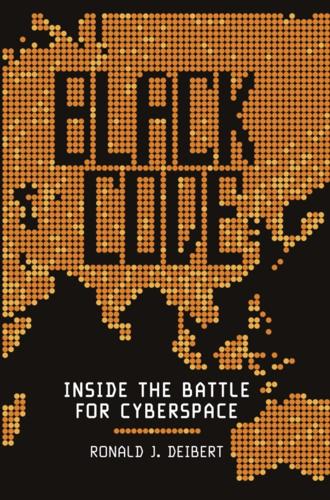
Black Code: Inside the Battle for Cyberspace
by
Ronald J. Deibert
Published 13 May 2013
I am not talking about programming a VCR, or lifting the hood of your car in the faint hope that you can fix the engine, or trying to brew a cup of coffee from a digitally operated espresso machine. I am talking about an intimate and ongoing understanding of what’s going on beneath the surface of the systems upon which we have become so reliant in order to communicate and remain informed. The science fiction writer Arthur C. Clarke argued that “any sufficiently advanced technology is indistinguishable from magic,” and as cyberspace grows more and more complex the more it becomes for most people a mysterious unknown that just “works,” something we just take for granted. It is not only that we know less and less about the technical systems upon which we depend, the problem is deeper than that.
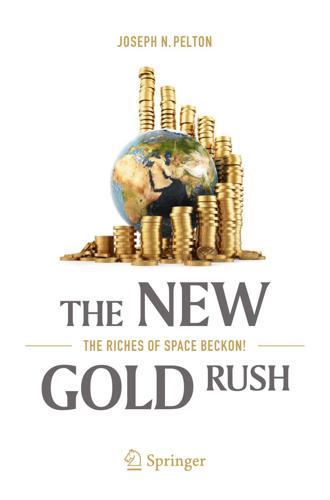
The New Gold Rush: The Riches of Space Beckon!
by
Joseph N. Pelton
Published 5 Nov 2016
These three laws are as follows: First law: When a distinguished but elderly scientist states that something is possible, he is almost certainly right. When he states that something is impossible, he is very probably wrong. Second law: The only way of discovering the limits of the possible is to venture a little way past them into the impossible. Third law: Any sufficiently advanced technology is indistinguishable from magic. If one thinks about the course of technological development over the past 200 years these tongue-in-cheek ways at looking at the world seem insightful indeed. Some of the world’s most noted scientists and engineers have not been able to anticipate the extent to which we have been able to develop new technologies and do this at ever faster rates.
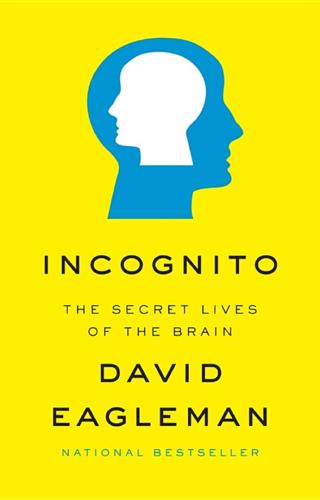
Incognito: The Secret Lives of the Brain
by
David Eagleman
Published 29 May 2011
To me, that understanding would be a numinous experience, better than anything ever proposed in anyone’s holy text. Whatever else exists beyond the limits of science is an open question for future generations; but even if strict materialism turned out to be it, it would be enough. Arthur C. Clarke was fond of pointing out that any sufficiently advanced technology is indistinguishable from magic. I don’t view the dethronement from the center of ourselves as depressing; I view it as magic. We’ve seen in this book that everything contained in the biological bags of fluid we call us is already so far beyond our intuition, beyond our capacity to think about such vast scales of interaction, beyond our introspection that this fairly qualifies as “something beyond us.”

Green Swans: The Coming Boom in Regenerative Capitalism
by
John Elkington
Published 6 Apr 2020
Throughout the process of producing Green Swans, we had in mind a saying often attributed to Nelson Mandela, but with roots stretching back to Roman naturalist Pliny the Elder: “It always seems impossible until it’s done.”28 CHAPTER 1 MIRACLES ON DEMAND Making the Impossible Inevitable “Any sufficiently advanced technology is indistinguishable from magic,” science fiction author Arthur C. Clarke famously concluded. In much the same way, anything that cracks a major economic, social, or environmental challenge that had previously seemed impossible to solve is likely to be loosely described as some form of “miracle.” And truth lurks in that loose use of language.

How to Spend a Trillion Dollars
by
Rowan Hooper
Published 15 Jan 2020
We have fMRI machines that can look into the body and see the workings of a living brain; we can land robots on asteroids in deep space; we not only know that matter is made of atoms, we can entangle them using our knowledge of quantum physics. The equivalent advances we might make if our understanding of reality moves on are unimaginable, because we simply don’t know what we might find. Arthur C. Clarke’s aphorism comes to mind – ‘any sufficiently advanced technology is indistinguishable from magic’. A world of magic and extraordinary wonder awaits, and we have the chance to get there faster. Achieved Alas, we cannot predict what we will discover, but all the scientists consulted expect these projects to reveal physics beyond the current standard model.

Wired for War: The Robotics Revolution and Conflict in the 21st Century
by
P. W. Singer
Published 1 Jan 2010
Likewise, the military funders tend to want the cooler technologies, while the mundane are less likely to get funded. One U.S. Army researcher working on nonlethal weapons systems complains, “You have to beg for money for things like beanbags or acoustics. But say it’s for a laser or a lightsaber and the money is no problem.” THE LENS OF THE LOOKING GLASS “Any sufficiently advanced technology is indistinguishable from magic,” famously argued English physicist and science fiction author Arthur C. Clarke. Indeed, when the warriors of the Hehe tribe in Tanzania surrounded a single German colonist in 1891, they seemingly had little to fear. But he had a magic box that killed almost a thousand spear-armed warriors by spitting out death faster than they ever imagined possible, the machine gun.
…
The captured emperor then offered the visitors a ransom to set him free, enough gold to fill a room twenty-two feet long, seventeen feet wide, and eight feet high. The visitors agreed. But after these strange, fearsome men had their gold, they reneged. They executed Atahuallpa and took over his empire. As the science fiction writer Arthur C. Clarke of 2001: A Space Odyssey fame once observed, “Any sufficiently advanced technology is indistinguishable from magic.” Nowhere is this more true than in war. Time and again, warring sides have used new technologies not only to kill more efficiently than their foe, but also to dazzle them into submission. The case of Atahuallpa, unlucky enough to become emperor just before the arrival of Francisco Pizarro and his tiny band of Spanish conquistadors, is a powerful example of just how shocking and powerful new weapons of war can be.
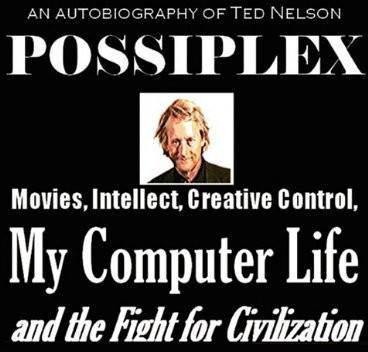
Possiplex
by
Ted Nelson
Published 2 Jan 2010
I don't remember what he said, but it was very complimentary, about hypertext and all. I was speechless. It is the only time ever remember being unable to say anything, pressed against the wall by his charisma wavefront. I could only nod and smile and thank him. AI Bullshit (N): “Intelligent Interfaces” Any sufficiently advanced technology is indistinguishable from magic. -- Arthur C. Clarke Clarke’s dictum, above, is one of the most unfortunate things ever said, suggesting that nobody will understand anything any more, separating the elite who control technology from the suckers who use it—undermining the democratic principle of popular understanding.
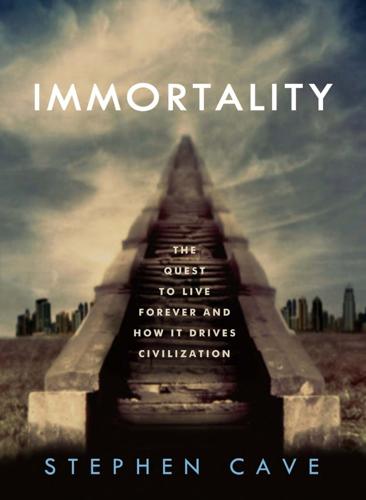
Immortality: The Quest to Live Forever and How It Drives Civilization
by
Stephen Cave
Published 2 Apr 2012
The battery of technologies that Xu Fu is credited with introducing to a still stone-age Japan genuinely would have contributed to increased lifespans for the island’s inhabitants. That, indeed, is their point, which is why it is entirely natural that the legend then seamlessly goes on to tell how Xu Fu’s genius culminated with his finding the elixir of life. The writer and futurist Arthur C. Clarke wrote that “any sufficiently advanced technology is indistinguishable from magic.” For a person wondering at the magical-seeming achievements of civilization, from the plow to heart bypass surgery, an elixir of life can seem an entirely plausible next step. This is as true now as it was in ancient Japan. Just as it was also already true in ancient China when the First Emperor came to power.
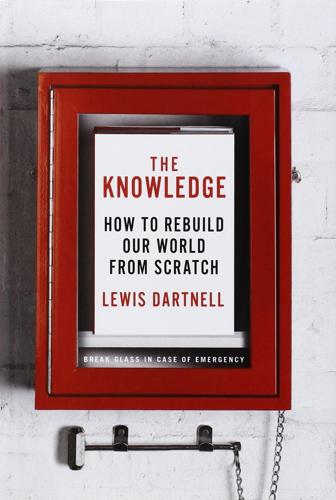
The Knowledge: How to Rebuild Our World From Scratch
by
Lewis Dartnell
Published 15 Apr 2014
The first generation born after the Fall would find the internal mechanisms of a modern phone absolutely inscrutable, the pathways of its microchip circuits invisibly small to the human eye and their purpose utterly mysterious. The sci-fi author Arthur C. Clarke said in 1961 that any sufficiently advanced technology is indistinguishable from magic. In the aftermath of the Fall, the rub is that this miraculous technology would have belonged not to some star-faring alien species, but to people just a generation in our own past. Even quotidian artifacts of our civilization that aren’t particularly high-tech still require a diversity of raw materials that must be mined or otherwise gathered, processed in specialized plants, and assembled in a manufacturing facility.
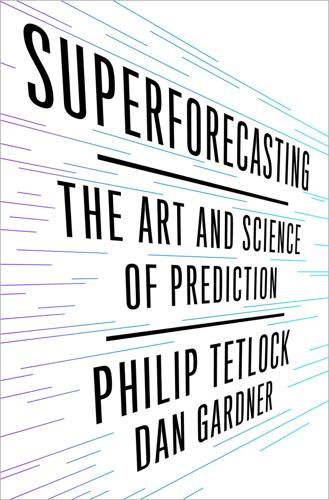
Superforecasting: The Art and Science of Prediction
by
Philip Tetlock
and
Dan Gardner
Published 14 Sep 2015
Reality is seen and foreseen like never before. And most of us—let’s be honest with ourselves—don’t have the dimmest idea how data scientists do what they do. We find it a little intimidating, if not dazzling. As the scientist and science fiction writer Arthur C. Clarke famously observed, “Any sufficiently advanced technology is indistinguishable from magic.” As an assistant professor of mathematics at Cornell, Lionel Levine is one of the magicians. His résumé lists an AB in math from Harvard, a PhD in math from Berkeley, a string of prestigious grants and fellowships, and a longer string of papers with occult titles like “Scaling Limits for Internal Aggregation Models with Multiple Sources.”
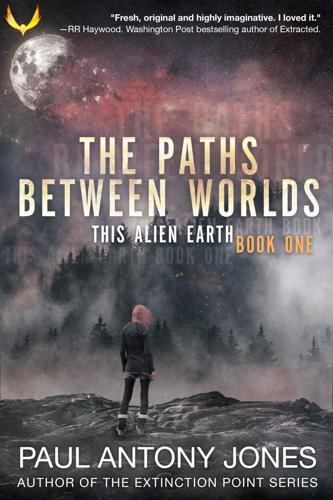
The Paths Between Worlds: This Alien Earth Book One
by
Paul Antony Jones
Published 19 Mar 2019
It reminded me of one of those old horror movies where the vampires or zombies come back to life at nightfall. But these weren’t the undead, they were the almost-dead, saved by a technology so advanced I couldn’t even begin to comprehend the intelligence behind it. How did that quote by Arthur C. Clarke go? “Any sufficiently advanced technology is indistinguishable from magic,” I whispered the words reverently. “Magic indeed,” Bull said. “I wonder, if we had possessed this technology in my time whether we would have continued to fight?” Edward opined. “Or whether we would have ever started those damnable wars in the first place. It seems to me that only infinite enlightenment could have created such a technology as this.”
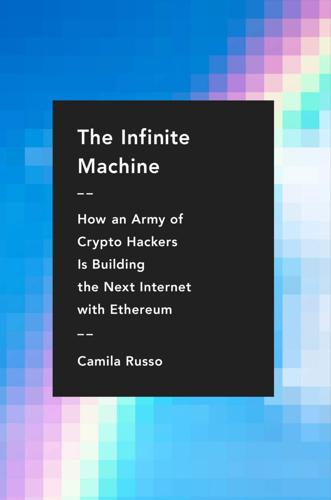
The Infinite Machine: How an Army of Crypto-Hackers Is Building the Next Internet With Ethereum
by
Camila Russo
Published 13 Jul 2020
Dedication “Before anything else, you are a writer,” my mother likes to say. This is for her. Epigraph Any sufficiently advanced technology is indistinguishable from magic. —Arthur C. Clarke Contents Cover Title Page Dedication Epigraph A Note to My Readers Part I: Groundwork 1: Mooning 2: Cypherpunks’ Fever Dream 3: The Magazine 4: The Rabbit Hole 5: The Swiss Knife Part II: Prelaunch 6: The White Paper 7: The First Responders 8: The Miami House 9: The Announcement 10: The Town of Zug 11: The Spaceship 12: The White-Shoe Lawyers 13: The Red Wedding 14: The (Non)Investment 15: The Ether Sale Part III: Launch 16: Takeoff 17: The Shrinking Runway 18: The First Dapps 19: The Magic Lock Part IV: Lunar Orbit 20: The DAO Wars 21: The Fork 22: The Shanghai Attacks Part V: Near-Landing 23: The Burning Wick 24: Accidentally Ether Rich 25: The New IPO 26: The Friendly Ghost 27: The Boom 28: Futures and Cats Part VI: Back to Earth 29: The Crash 30: The Party Acknowledgments Notes About the Author Copyright About the Publisher A Note to My Readers I don’t consider myself a computer geek.

The Sirens' Call: How Attention Became the World's Most Endangered Resource
by
Chris Hayes
Published 28 Jan 2025
And so on this night, I realized at some point that I had just spent an entire hour on TikTok watching video after video of delicious sandwiches being made and then cut in half. And at that moment, it dawned on me that the algorithm…had figured out I was stoned! The legendary science fiction author Arthur C. Clarke once wrote that “any sufficiently advanced technology is indistinguishable from magic,” and this was one of those moments that felt like magic.[48] I knew it was just an algorithm, but it felt like the machine I was holding in my hands had figured out something about me I’d never told it. The development of digital technology like this has made spectacle increasingly privatized and solitary.
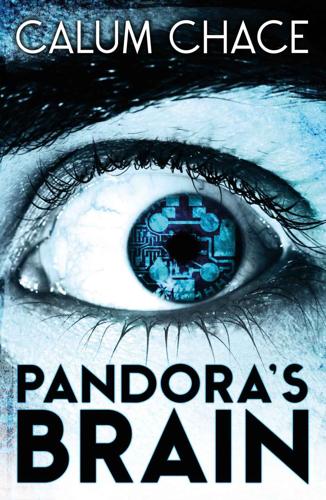
Pandora's Brain
by
Calum Chace
Published 4 Feb 2014
‘And competition with the AI is just one of the scenarios which don’t work out well for humanity. Even if the AI is well-disposed towards us it could inadvertently enfeeble us simply by demonstrating vividly that we have become an inferior species. Science fiction writer Arthur C Clarke’s third law famously states that any sufficiently advanced technology is indistinguishable from magic. A later variant of that law says that any sufficiently advanced benevolence may be indistinguishable from malevolence.’ As Professor Montaubon drew breath, Ross took the opportunity to introduce a change of voice. ‘How about you, Professor Christensen? Are you any more optimistic?’

Augmented: Life in the Smart Lane
by
Brett King
Published 5 May 2016
Race Against the Machine: How the Digital Revolution Is Accelerating Innovation, Driving Productivity, and Irreversibly Transforming Employment and the Economy (Richmond, VA: Digital Frontier Press, 2011). See also Erik Brynjolfsson and Andrew McAfee. The Second Machine Age: Work, Progress, and Prosperity in a Time of Brilliant Technologies (London: W. W. Norton, 2014). Chapter 2 The Augmented Age “Any sufficiently advanced technology is indistinguishable from magic.” Arthur C. Clarke’s Third Law from Profiles of the Future (revised edition, 1973) We are closer now to 2030 than we are to the start of the new millennium (2000). The technologies we are exploring today, such as artificial intelligence, gene editing, nanoscale manufacturing, autonomous vehicles, robots, wearables and embedded computing, are radically going to redefine the next age of humanity.
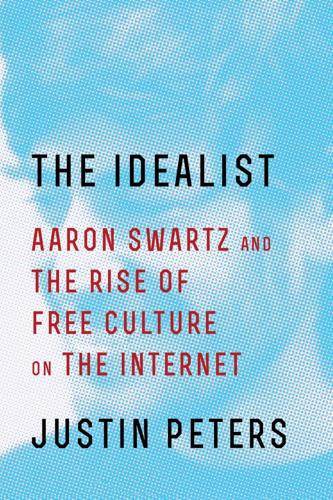
The Idealist: Aaron Swartz and the Rise of Free Culture on the Internet
by
Justin Peters
Published 11 Feb 2013
This dream is usually abandoned with age, deferred into idle bar-stool radicalism and the occasional protest vote. The world has many problems, and even the most effective individual would be unlikely to solve all of them absent divine intervention or black magic. The novelist Arthur C. Clarke’s famous Third Law states, “Any sufficiently advanced technology is indistinguishable from magic.” It is also true that any sufficiently advanced technology encourages magical thinking. New technologies are indistinguishable from magic wands, imbued with great and implausible powers that can transcend societal barriers and the laws of thermodynamics. Silicon Valley is rife with examples of aspiring messiahs touting the world-historical potential of their products.
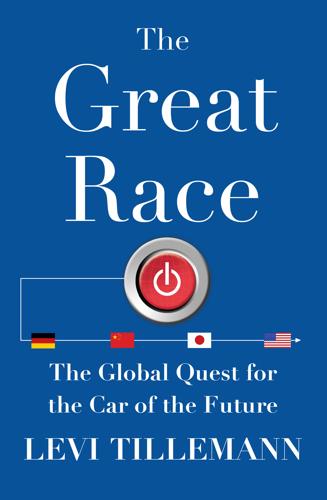
The Great Race: The Global Quest for the Car of the Future
by
Levi Tillemann
Published 20 Jan 2015
At the turn of the twentieth century, motorized cars were a novelty—they were finicky, dangerous, and there was a reasonable argument that the horse was a better piece of hardware. But within a decade or two this had changed. After World War II, the level of industrial specialization required to integrate ever more advanced automotive systems grew exponentially. The British futurist Arthur C. Clarke once famously wrote that “any sufficiently advanced technology is indistinguishable from magic.” And by the beginning of the twenty-first century, the complexity of an automobile had far outstripped the understanding of the common man. Making an automobile that was strong, safe, durable, clean, and efficient enough to be globally competitive required legions of engineers, physicists, specialists in areas like fluid dynamics, harmonics, kinematics, materials science, and an increasingly large number of electrical engineers and computer scientists.
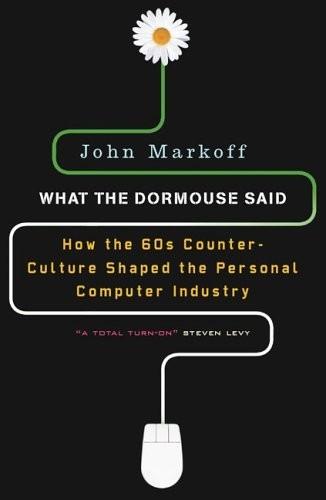
What the Dormouse Said: How the Sixties Counterculture Shaped the Personal Computer Industry
by
John Markoff
Published 1 Jan 2005
Afterward, no one remembered the talk, which was lost in the brilliance of Engelbart’s NLS creation. Indeed, it was the moment the tables turned, and computer science, which had until then been primarily concerned with the esoteric problem of automating human intelligence, would never be the same. Arthur C. Clarke once said, “Any sufficiently advanced technology is indistinguishable from magic.” For many people who saw Doug Engelbart bombing through cyberspace and dealing lightning with both hands in December 1968, that was certainly true. But one young programmer who watched from the audience had a stronger reaction. Charles Irby had been a student at the University of California at Santa Barbara, where he had worked for Glen Culler, a math professor who independently designed interactive computers for mathematical applications before anyone knew what the word “interactive” meant in that context.

The Deep Learning Revolution (The MIT Press)
by
Terrence J. Sejnowski
Published 27 Sep 2018
J. Sejnowski, “Rotating Waves during Human Sleep Spindles Organize Global Patterns of Activity during the Night,” eLife 5 (2016): e17267. Supported by the Office of Naval Research. 13. In what came to be known as “Clarke’s third law,” Arthur C. Clarke famously said, “Any sufficiently advanced technology is indistinguishable from magic.” Chapter 16 1. This chapter was adapted from T. J. Sejnowski, “Consciousness,” Daedalus 144, no. 1 (2015): 123–132. See also Francis H. C. Crick, What Mad Pursuit: A Personal View of Scientific Discovery (New York: Basic Books, 1988); Bob Hicks, “Kindra Crick’s Mad Pursuit,” Oregon ArtWatch, December 3, 2015. http://www.orartswatch.org/ kindra-cricks-mad-pursuit/.
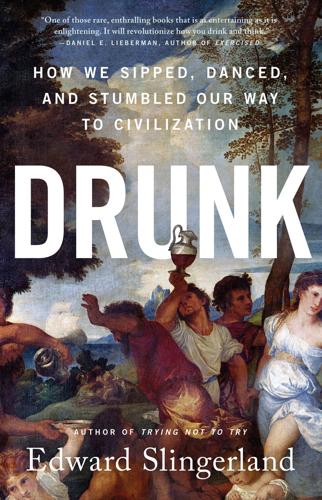
Drunk: How We Sipped, Danced, and Stumbled Our Way to Civilization
by
Edward Slingerland
Published 31 May 2021
When they hold your hand, look into your eyes, and ask you vague then increasingly precise questions, they are taking advantage of subtle expressions and tiny reactions to hone in on the fact that you recently suffered a loss in your family and are desperately unhappy at work. This seems like magic to ordinary people, but only to the same extent that commonplace human mind-reading would seem to a chimpanzee. The science fiction writer Arthur C. Clarke once said that any sufficiently advanced technology is indistinguishable from magic to the uninitiated. The same is true of extreme traits exaggerated by runaway evolutionary arms races. Crucially for our story about alcohol, cultures are not disinterested bystanders in this contest between cheaters and cheater detectors. Cultures benefit when the individuals in them are able to solve Prisoner’s Dilemmas and other cooperation challenges, and so have a vested interest in putting their thumb on the scale to favor the cheater detectors.
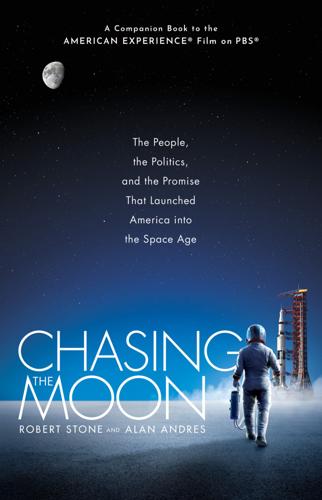
Chasing the Moon: The People, the Politics, and the Promise That Launched America Into the Space Age
by
Robert Stone
and
Alan Andres
Published 3 Jun 2019
“I prided myself” ACC, Astounding Days (London: Gollancz, 1989), p. 125. When the project was completed ACC, Astounding, p. 152. “When a distinguished” Clarke’s other two laws being: “The only way of discovering the limits of the possible is to venture a little way past them into the impossible” (Clarke’s Second Law, 1962), and “Any sufficiently advanced technology is indistinguishable from magic” (Clarke’s Third Law, 1973). News about the society’s rocket Tony Reichhardt, “H.M.S. Moon Rocket,” Air & Space (March 1997). During the flurry McAleer, Odyssey, p. 35. Sitting on a veranda Fritz Lang, “Sci-Fi Film-maker’s Debt to Rocket Man Willy Ley,” Los Angeles Times (July 27, 1969).
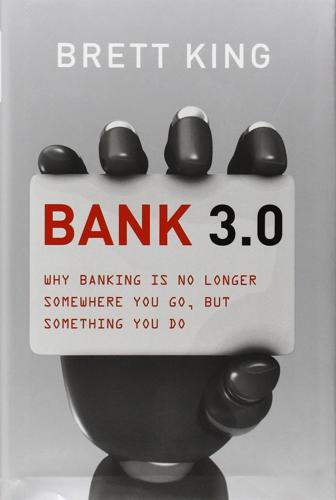
Bank 3.0: Why Banking Is No Longer Somewhere You Go but Something You Do
by
Brett King
Published 26 Dec 2012
There will be a huge business in manufacturing 3D printers at least! Well, that is, until we can print a new 3D printer using your old one . . . A great quote to illustrate the concept of the realisation of such technological advancement is one from the late science fiction author, Arthur C. Clarke: “Any sufficiently advanced technology is indistinguishable from magic.” An iPad would certainly have appeared magical to someone living in the 18th century. While 25 years is a long way away, let’s think about the devices we’ll be using in 2016, just four years away, and how those devices will enable the banking experience. The technology of 2016 should inform the type of services and technology utilisation required for banking in four years’ time.

User Friendly: How the Hidden Rules of Design Are Changing the Way We Live, Work & Play
by
Cliff Kuang
and
Robert Fabricant
Published 7 Nov 2019
You don’t even have to go to the trouble of taking out your wallet when your kid grabs a stuffed Olaf and begs for just this one thing, please. You just wave your MagicBand. Tom Staggs couches Disney’s goals for the MagicBand system in an old saw from Arthur C. Clarke. “Any sufficiently advanced technology is indistinguishable from magic,” he told me. “That’s how we think of it. If we can get out of the way, our guests can create more memories.”9 At the time, Staggs was the chief operating officer of the entire $168 billion Walt Disney Company empire, a parks veteran in line to become Disney’s next CEO.
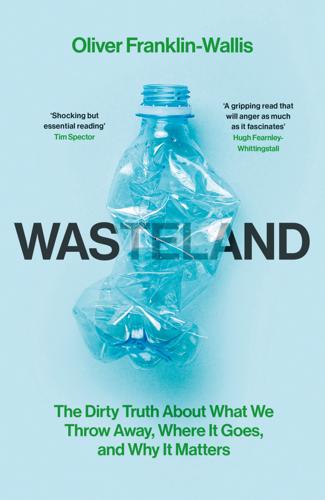
Wasteland: The Dirty Truth About What We Throw Away, Where It Goes, and Why It Matters
by
Oliver Franklin-Wallis
Published 21 Jun 2023
We also understand that some obsolescence is good: replacing cars for models with more fuel-efficient engines or catalytic converters, for example, or plastic bottles that contain fewer toxic chemicals. Similarly, we know the rapid churn of smart devices in the last decade-plus has largely been driven not by faulty products, but by the relentless pace of technological progress. (When Arthur C. Clarke wrote in 1962 that ‘any sufficiently advanced technology is indistinguishable from magic’ he might have been describing the iPhone.) Even so, the electronics industry in recent years has faced allegations that a modern version of planned obsolescence is contributing to our rising tide of e-waste. The assertion is less one of fact than of feeling, but nonetheless has slowly but steadily accumulated, along with our rubbish.

More Everything Forever: AI Overlords, Space Empires, and Silicon Valley's Crusade to Control the Fate of Humanity
by
Adam Becker
Published 14 Jun 2025
Clarke also referenced Tsiolkovsky by name in his later novel Rendezvous with Rama.)29 In both novels, these evolved humans take their place alongside similarly transcendent aliens of ancient lineage, with technology enabling godlike powers of creation, destruction, and transformation. “Any sufficiently advanced technology is indistinguishable from magic,” said Clarke in his most famous dictum. In the meantime, before humanity’s technological apotheosis, Clarke saw other reasons for taking to space—reasons echoed by Jeff Bezos and J. Storrs Hall decades later. “Interplanetary travel is now the only form of ‘conquest and empire’ compatible with civilisation,” Clarke wrote in 1951.
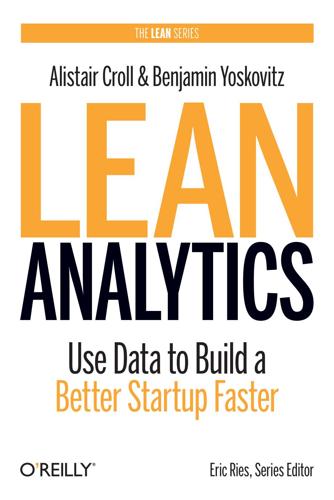
Lean Analytics: Use Data to Build a Better Startup Faster
by
Alistair Croll
and
Benjamin Yoskovitz
Published 1 Mar 2013
It’s hard to decide how good your minimum product should be. On the one hand, time is precious, and you need to cut things ruthlessly. On the other hand, you want users to have an “aha!” moment, that sense of having discovered something important and memorable worth solving. You need to keep the magic. Clarke’s Third Law: Any sufficiently advanced technology is indistinguishable from magic. —Arthur C. Clarke, Profiles of the Future, 1961 Gehm’s Corrollary: Any technology distinguishable from magic is insufficiently advanced. —Barry Gehm, ANALOG, 1991 Deciding What Goes into the MVP Take all of your solution interviews, quantitative analysis, and “hacks,” and decide what feature set to launch for your MVP.
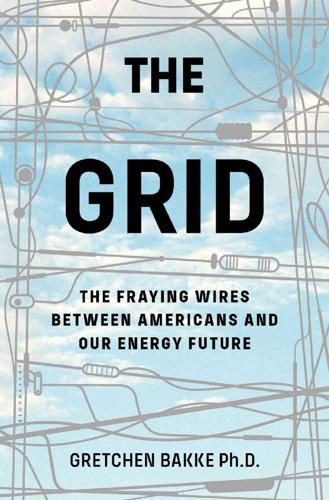
The Grid: The Fraying Wires Between Americans and Our Energy Future
by
Gretchen Bakke
Published 25 Jul 2016
Contents Introduction CHAPTER 1 The Way of the Wind CHAPTER 2 How the Grid Got Its Wires CHAPTER 3 The Consolidation of Power CHAPTER 4 The Cardigan Path CHAPTER 5 Things Fall Apart CHAPTER 6 Two Birds, One Stone CHAPTER 7 A Tale of Two Storms CHAPTER 8 In Search of the Holy Grail CHAPTER 9 American Zeitgeist Afterword: Contemplating Death in the Afternoon Acknowledgments Notes Index A Note on the Author Any sufficiently advanced technology is indistinguishable from magic. —ARTHUR C. CLARKE Right now there’s three power companies in New York City: there is ConEd in Manhattan, there is the Brooklyn power company Brooklyn Union Gas up in Brooklyn, and there is a windmill here on 519 East Eleventh Street. —INTERVIEW FROM THE 1978 FILM VIVA LOISAIDA Introduction Energy is a hot-button issue these days.

AI 2041: Ten Visions for Our Future
by
Kai-Fu Lee
and
Qiufan Chen
Published 13 Sep 2021
Classification: LCC Q335 .L423 2021 (print) | LCC Q335 (ebook) | DDC 006.3—dc23 LC record available at https://lccn.loc.gov/2021012928 LC ebook record available at https://lccn.loc.gov/2021012929 International edition ISBN 9780593240717 Ebook ISBN 9780593238301 crownpublishing.com Book design by Edwin Vazquez, adapted for ebook Cover Design: Will Staehle ep_prh_5.7.1_c0_r0 Contents Cover Title Page Copyright Epigraph Introduction by Kai-Fu Lee: The Real Story of AI Introduction by Chen Qiufan: How We Can Learn to Stop Worrying and Embrace the Future with Imagination Chapter One: The Golden Elephant Analysis: Deep Learning, Big Data, Internet/Finance Applications, AI Externalities Chapter Two: Gods Behind the Masks Analysis: Computer Vision, Convolutional Neural Networks, Deepfakes, Generative Adversarial Networks (GANs), Biometrics, AI Security Chapter Three: Twin Sparrows Analysis: Natural Language Processing, Self-Supervised Training, GPT-3, AGI and Consciousness, AI Education Chapter Four: Contactless Love Analysis: AI Healthcare, AlphaFold, Robotic Applications, COVID Automation Acceleration Chapter Five: My Haunting Idol Analysis: Virtual Reality (VR), Augmented Reality (AR), and Mixed Reality (MR), Brain-Computer Interface (BCI), Ethical and Societal Issues Chapter Six: The Holy Driver Analysis: Autonomous Vehicles, Full Autonomy and Smart Cities, Ethical and Social Issues Chapter Seven: Quantum Genocide Analysis: Quantum Computers, Bitcoin Security, Autonomous Weapons and Existential Threat Chapter Eight: The Job Savior Analysis: AI Job Displacement, Universal Basic Income (UBI), What AI Cannot Do, 3Rs as a Solution to Displacement Chapter Nine: Isle of Happiness Analysis: AI and Happiness, General Data Protection Regulation (GDPR), Personal Data, Privacy Computing Using Federated Learning and Trusted Execution Environment (TEE) Chapter Ten: Dreaming of Plenitude Analysis: Plenitude, New Economic Models, the Future of Money, Singularity Acknowledgments Other Titles About the Authors What we want is a machine that can learn from experience. —Alan Turing Any sufficiently advanced technology is indistinguishable from magic. —Arthur C. Clarke INTRODUCTION BY KAI-FU LEE THE REAL STORY OF AI Artificial intelligence (AI) is smart software and hardware capable of performing tasks that typically require human intelligence. AI is the elucidation of the human learning process, the quantification of the human thinking process, the explication of human behavior, and the understanding of what makes intelligence possible.
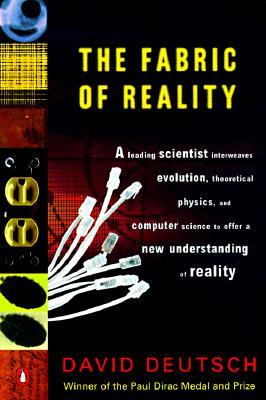
The Fabric of Reality
by
David Deutsch
Published 31 Mar 2012
You would know that, even though the universe seemed to have a certain layout and obey certain laws, there must be a wider universe outside it, obeying different laws of physics. And you could even guess some of the ways in which these wider laws would have to differ from the chessboard laws. Arthur C. Clarke once remarked that 'any sufficiently advanced technology is indistinguishable from magic'. This is true, but slightly misleading. It is stated from the point of view of a pre-scientific thinker, which is the wrong way round. The fact is that to anyone who understands what virtual reality is, even genuine magic would be indistinguishable from technology, for there is no room for magic in a comprehensible reality.

The Hype Machine: How Social Media Disrupts Our Elections, Our Economy, and Our Health--And How We Must Adapt
by
Sinan Aral
Published 14 Sep 2020
Which explains why Facebook has invested so heavily in Internet.org and its Connectivity Lab, which are tasked with bringing the Internet to the developing world, whether by balloon, satellite, drone, or laser—it wants more people on the Internet so it can add more Facebook users and maintain the rate at which its value grows. This is true of the Hype Machine in general. Any sufficiently advanced technology is indistinguishable from magic. —ARTHUR C. CLARKE In August 2016, Hillary Clinton found herself in a jail cell in the back of a Ford F-350 pickup truck in West Palm Beach, Florida. Although she didn’t know it at the time, it was the Russians who had put her there. Replicating their information warfare strategy from Crimea in 2014, they were now pointing the Hype Machine at the United States in the hope of disrupting the 2016 presidential election.
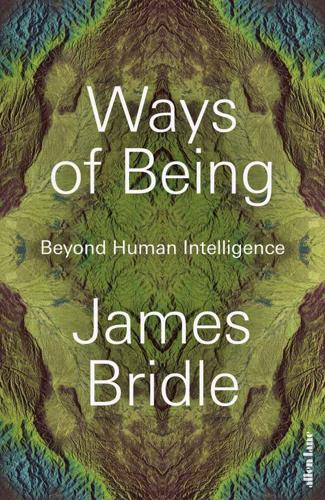
Ways of Being: Beyond Human Intelligence
by
James Bridle
Published 6 Apr 2022
For most people, many of the most significant and powerful processes and devices around us – from smartphones and laptops to financial systems and political protocols – are effectively black boxes, amenable only to those with specialized knowledge and privileged access: a situation which produces radical inequalities of power and agency. It’s no wonder that the most repeated of Arthur C. Clarke’s three laws is the third: any sufficiently advanced technology is indistinguishable from magic.25 Magical terminology is also buried in the machines themselves. Helper programmes designed to assist users unfamiliar with new software bear the name ‘wizard’, while a common name for the sub-routines that quietly monitor and run many of the background processes in computer systems is a ‘daemon’.
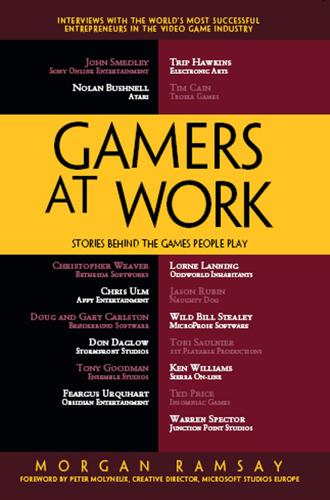
Gamers at Work: Stories Behind the Games People Play
by
Morgan Ramsay
and
Peter Molyneux
Published 28 Jul 2011
We had developed a very loyal following who knew us by that name, and so the die was cast. Ramsay: What other names did you consider? Weaver: I dabbled with the idea of using a name that incorporated the word “magic” out of respect for Arthur C. Clarke, who said, “Any sufficiently advanced technology is indistinguishable from magic.” But, in the end, Bethesda Softworks stuck. Ramsay: Location is important to some businesses. How did you choose the commercial space? Where was it? Weaver: A commercial location became important because the original place where I started the company was my house, which was not zoned for a commercial enterprise.

The Age of Spiritual Machines: When Computers Exceed Human Intelligence
by
Ray Kurzweil
Published 31 Dec 1998
TECHNOLOGY: EVOLUTION BY OTHER MEANS When a scientist states that something is possible, he is almost certainly right. When he states that something is impossible, he is very probably wrong. The only way of discovering the limits of the possible is to venture a little way past them into the impossible. Any sufficiently advanced technology is indistinguishable from magic. —Arthur C. Clarke’s three laws of technology A machine is as distinctively and brilliantly and expressively human as a violin sonata or a theorem in Euclid. —Gregory Vlastos Technology picks right up with the exponentially quickening pace of evolution.
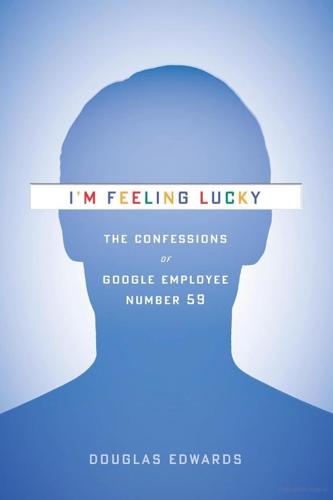
I'm Feeling Lucky: The Confessions of Google Employee Number 59
by
Douglas Edwards
Published 11 Jul 2011
Truth could not be objectively and rationally derived until we had actually made a decision and implemented it. When we guessed wrong, usage dropped and user email increased. "Why can't I change my display font?" people demanded to know. "Isn't this still America?" Arthur C. Clarke once postulated, "Any sufficiently advanced technology is indistinguishable from magic." Our job on the UI team was to set the stage for the technological marvel that happened whenever someone conducted a search—to make Google's interface supernaturally simple to use. The choices we made may look painfully obvious, but that's a mark of the team's success.
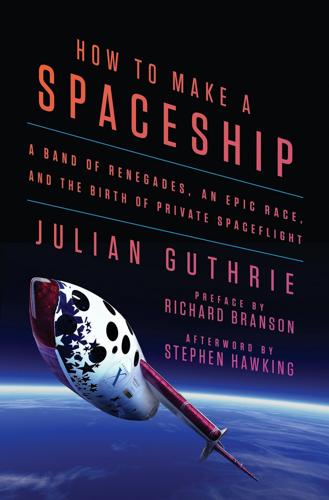
How to Make a Spaceship: A Band of Renegades, an Epic Race, and the Birth of Private Spaceflight
by
Julian Guthrie
Published 19 Sep 2016
“They all have a common sense of space,” Clarke said, urging Peter, Bob, and Todd to think of students from all languages, nationalities, governments, and ideologies coming together over a shared love of space. “Focus on young people,” he said. He used a line the group loved: Any sufficiently advanced technology is indistinguishable from magic. Toward the end of dinner, Peter said, “If you don’t mind, can we call you ‘Uncle Arthur’?” The answer was yes, and soon Uncle Arthur, the prophet of the space age, had signed on to become an adviser to SEDS. — Back in the Man Vehicle Lab at MIT, working with Professor Chuck Oman, Peter affixed adhesive electrode patches to the face of a man he considered royalty—Byron Lichtenberg, test pilot, Vietnam fighter pilot, MIT-trained mechanical engineer and biomedical engineer, and new breed of space traveler.
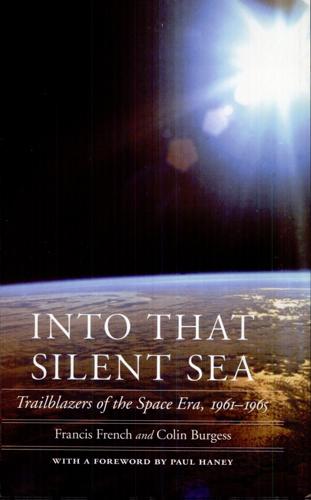
Into That Silent Sea: Trailblazers of the Space Era, 1961-1965
by
Francis O. French
,
Colin Burgess
and
Paul Haney
Published 2 Jan 2007
He did more than fly in space and return safely to the Earth; he saw, he experienced, what was out there. One hopes the first person on Mars has the same gleam in his or her eye, the same thirst for knowledge that Scott Carpenter still shows and shares, more than forty years after his sole journey into space. 6. Heavenly Twins Any sufficiently advanced technology is indistinguishable from magic. Sir Arthur C. Clarke At 11:30 a.m. on 11 August 1962, the seventh person to leave the Earth in a spacecraft was launched into orbit. It was a Soviet national holiday known as Physical Culture Day, and the much-rumored launch was dramatically announced in a special Radio Moscow broadcast to the nation, interrupting regular programs.

Grand Transitions: How the Modern World Was Made
by
Vaclav Smil
Published 2 Mar 2021
Figure 7.2 Declining cost of international telephone calls. Compared to 1930 a short trans-Atlantic call is now four orders of magnitude (1/10,000) cheaper. Plotted from data in OECD (2013) and Rodrigue (2017). Arthur C. Clarke’s often cited (and highly perceptive) Third Law states that any sufficiently advanced technology is indistinguishable from magic (Clarke 1962). The claim could be easily repurposed for describing the quality-of-life gains that have resulted from the two centuries, and in many cases from just one century or its fraction, of grand transitions. Typical longevities, levels of income, amenities of quotidian existence, incessant flows of energies, variety of food, ease and affordability of travel, surfeit of virtually cost-free information—all of these gains have been truly magical for two reasons.

Blood in the Machine: The Origins of the Rebellion Against Big Tech
by
Brian Merchant
Published 25 Sep 2023
Footnote 1 In The Communist Manifesto, Marx and Engels wrote that “modern bourgeois society… has conjured up such gigantic means of production and of exchange, [it] is like the sorcerer who is no longer able to control the powers of the nether world whom he has called up by his spells.” You can’t help but hear Arthur C. Clarke’s famous dictum that “any sufficiently advanced technology is indistinguishable from magic”—indistinguishable because it benefits elites to keep it that way, because the webs of exploitation are so vast and opaque, and because the final product is, too. WHAT THE LUDDITES WON Scores of Luddites were killed by machine owners and the state. Many more were cast into poverty.
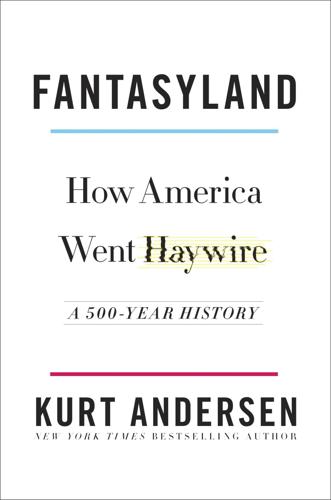
Fantasyland: How America Went Haywire: A 500-Year History
by
Kurt Andersen
Published 4 Sep 2017
in 1844, the United States had two thousand miles of sparking, glowing wires carrying messages from Maine to Missouri, Chicago to Savannah. “On the first of January, 1848, of the Christian era,” The New York Herald declared, “the new age of miracles began.” Which was among the greatest illustrations of Arthur C. Clarke’s famous third law: “Any sufficiently advanced technology is indistinguishable from magic.” But in this book Clarke’s aphorism has a converse meaning as well: technology that seems magical and miraculous can encourage and confirm credulous people’s belief in make-believe magic and miracles. A few months after the Herald announced this new age of miracles, Americans were therefore inclined to believe when a pair of sisters, twelve and fifteen, announced they had communicated with a ghost haunting their house by means of a kind of knock-knocking Morse code.
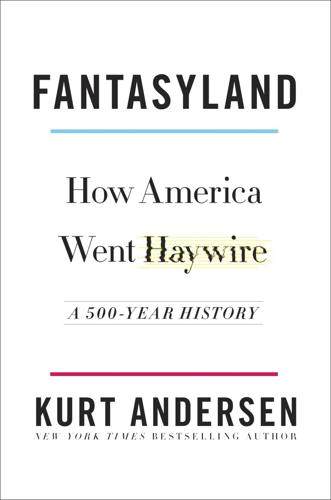
Fantasyland
by
Kurt Andersen
Published 5 Sep 2017
in 1844, the United States had two thousand miles of sparking, glowing wires carrying messages from Maine to Missouri, Chicago to Savannah. “On the first of January, 1848, of the Christian era,” The New York Herald declared, “the new age of miracles began.” Which was among the greatest illustrations of Arthur C. Clarke’s famous third law: “Any sufficiently advanced technology is indistinguishable from magic.” But in this book Clarke’s aphorism has a converse meaning as well: technology that seems magical and miraculous can encourage and confirm credulous people’s belief in make-believe magic and miracles. A few months after the Herald announced this new age of miracles, Americans were therefore inclined to believe when a pair of sisters, twelve and fifteen, announced they had communicated with a ghost haunting their house by means of a kind of knock-knocking Morse code.

Ghost Train to the Eastern Star: On the Tracks of the Great Railway Bazaar
by
Paul Theroux
Published 9 Sep 2008
Sister ship came along. Too late! Disaster!’ After swallowing a little, he said tentatively, ‘You wrote some books.’ ‘Yes. In one of them, The Mosquito Coast, there’s an unattributed quote from you about technology and magic.’ ‘Clarke’s Third Law!’ he said and rubbed his hands. ‘Any sufficiently advanced technology is indistinguishable from magic.’ ‘What is Clarke’s First Law?’ I asked. ‘First Law,’ he said, hardly hesitating. ‘The only way of discovering the limits of the possible is to go beyond the impossible.’ ‘Second Law?’ ‘There is no Second Law, only first and third. Heh-heh.’ He became playful and animated.
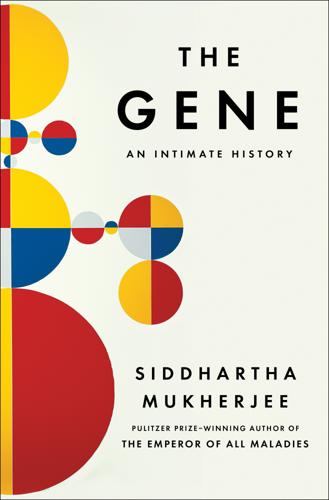
The Gene: An Intimate History
by
Siddhartha Mukherjee
Published 16 May 2016
Asilomar, then, marked the crossing of these pivotal lines. It was a celebration, an appraisal, an assembly, a confrontation, a warning. It began with a speech and ended with a document. It was the graduation ceremony for the new genetics. “Clone or Die” If you know the question, you know half. —Herb Boyer Any sufficiently advanced technology is indistinguishable from magic. —Arthur C. Clarke Stan Cohen and Herb Boyer had also gone to Asilomar to debate the future of recombinant DNA. They found the conference irritating—even deflating. Boyer could not bear the infighting and the name-calling; he called the scientists “self-serving” and the meeting a “nightmare.”

The Singularity Is Near: When Humans Transcend Biology
by
Ray Kurzweil
Published 14 Jul 2005
I enjoyed the delight of my audiences in experiencing apparently impossible transformations of reality. In my teen years, I replaced my parlor magic with technology projects. I discovered that unlike mere tricks, technology does not lose its transcendent power when its secrets are revealed. I am often reminded of Arthur C. Clarke's third law, that "any sufficiently advanced technology is indistinguishable from magic." Consider J. K. Rowling's Harry Potter stories from this perspective. These tales may be imaginary, but they are not unreasonable visions of our world as it will exist only a few decades from now. Essentially all of the Potter "magic" will be realized through the technologies I will explore in this book.

The Transhumanist Reader
by
Max More
and
Natasha Vita-More
Published 4 Mar 2013
Further, in his book The God Delusion, Dawkins wrote: “[T]here are very probably alien civilizations that are superhuman, to the point of being god-like in ways that exceed anything a theologian could possibly imagine. … As Arthur C. Clarke put it, in his Third Law: “Any sufficiently advanced technology is indistinguishable from magic.” In what sense would they be superhuman but not supernatural? In a very important sense, which goes to the heart of this book. The crucial difference between gods and god-like extraterrestrials lies not in their properties but in their provenance. Entities that are complex enough to be intelligent are products of an evolutionary process.

The Art of Software Security Assessment: Identifying and Preventing Software Vulnerabilities
by
Justin Schuh
Published 20 Nov 2006
In particular, we would like to acknowledge Neel Mehta, Halvar Flake, John Viega, and Nishad Herath for their tireless efforts in reviewing and helping to give us technical and organizational direction. We’d also like to thank the entire publishing team at Addison-Wesley for working with us to ensure the highest-quality finished product possible. Part I: Introduction to Software Security Assessment Chapter 1. Software Vulnerability Fundamentals “Any sufficiently advanced technology is indistinguishable from magic.” Arthur C. Clarke Introduction The average person tends to think of software as a form of technological wizardry simply beyond understanding. A piece of software might have complexity that rivals any physical hardware, but most people never see its wheels spin, hear the hum of its engine, or take apart the nuts and bolts to see what makes it tick.